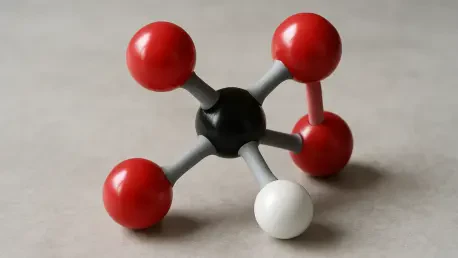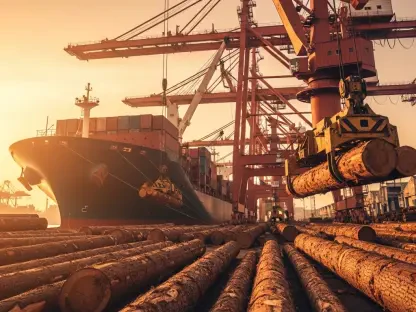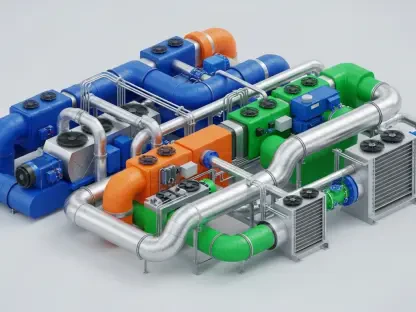The maleic anhydride market has evolved into an instrumental arena for economic growth and industrial innovation, captivating attention from diverse sectors globally. Its primary use in the production of unsaturated polyester resins (UPRs) underscores its indispensable role, especially in industries like construction and automotive. This substance’s versatility has pushed its significance in strengthening material applications that demand durability and resistance to harsh environments. As outlined in the comprehensive report by the IMARC Group, analysts have delved deeply into market dynamics, trends, forecast predictions, and competitive landscapes from 2025 to 2033. The projection of this market from a valuation of USD 3.5 billion in 2024 to an expected USD 5.2 billion by 2033, with a compound annual growth rate (CAGR) of 4.10%, suggests substantial expansion driven by escalating demands across multiple industries.
Industry Drivers and Segmentation
The construction industry is prominently augmenting demand for maleic anhydride as urbanization continues to accelerate infrastructure projects across the globe. This surge is evident in emerging markets where robust and cost-effective building materials have become indispensable. Complementary to construction, the automotive industry’s yearning for lightweight, high-performance materials aligns with the properties of unsaturated polyester resins, derived from maleic anhydride. As automotive manufacturers strive for fuel efficiency and compliance with stringent emission norms, maleic anhydride’s contribution through its derivatives is pivotal. In examining market segmentation, raw materials such as n-butane and benzene emerge as critical components, with n-butane commanding the market due to its cost-benefit and notable availability. Applications highlighting unsaturated polyester resins spearhead industry usage, reflecting its predominance in sectors that include marine, automotive, and construction.
Regional Dynamics and Competitive Landscape
The Asia Pacific region has cemented its role as the leader of the maleic anhydride market. This supremacy is attributed to rapid industrial growth partnered with a flourishing automotive industry and energetic construction activities, particularly in powerhouse countries like China and India. The region has habitually acted as a catalyst for market growth worldwide, leveraging its expansive industrialization to foster demand. On the competitive frontier, key industry players such as Helm AG, Huntsman Corporation, INEOS Group Limited, and others are active stakeholders, influencing market dynamics via innovation and expansion strategies. They persistently focus on technological advancements and regional growth opportunities to secure and intensify their market position. Companies are engaging in strategic alliances and research to navigate challenges. These include fluctuating raw material costs and environmental regulations that could otherwise impede growth momentum.
Opportunities and Challenges
Maleic anhydride’s position in the automotive sector becomes increasingly integral as the industry progresses towards electric and hybrid vehicles. The transition demands materials that are lightweight yet durable, such as polybutylene terephthalate (PBT), a product that uses maleic anhydride. This innovation in automotive materials enhances fuel efficiency while meeting emissions standards, reinforcing the compound’s market relevancy. Nonetheless, potential hurdles like variable raw material pricing and rigorous environmental mandates pose obstacles that manufacturers need to address. The market’s vitality depends on continued research and innovation alongside forming strategic partnerships aimed at overcoming these impediments. Nevertheless, the industry remains resilient due to its focus on sustainable solutions and aligning practices with environmental norms while tapping into the eco-friendly transportation surge.
Sustaining Growth and Strategic Insights
Synthesizing the insights from multifaceted analyses highlights maleic anhydride’s versatility as it supports varied industrial applications. Its growth trajectory is firmly supported by demanding calls for sustainable materials in construction and automotive sectors, along with persistent industrialization in leading regions. As eco-friendly transportation solutions evolve, the market’s prospects are bolstered by these dynamics. However, tangible constraints related to raw material fluctuations and regulatory conditions show that strategic measures need consideration. Continued emphasis on research, technological innovation, and forming alliances will likely navigate these challenges. Such measures are anticipated to secure sustainable growth within the maleic anhydride market by harnessing its synergy with burgeoning sectors and eco-friendly initiatives.
Conclusion: Navigating Sustainable Growth
The maleic anhydride market has proven its potential as a linchpin for advancing industrial applications through its versatile properties and extensive usage across dynamic sectors like construction and automotive. Evaluation of its growth prospects recognizes the impact of core factors, including urbanization and automotive evolution, while acknowledging possible challenges related to cost volatility and regulatory issues. The profound analysis within the report enlightens stakeholders, equipping them with strategic insights and understanding essential for aligning decisions with market trends. With sustained focus on innovation, partnership development, and compliance with evolving environmental standards, stakeholders are set to maintain the market’s momentum, ensuring future growth aligns with sustainable ambitions.









